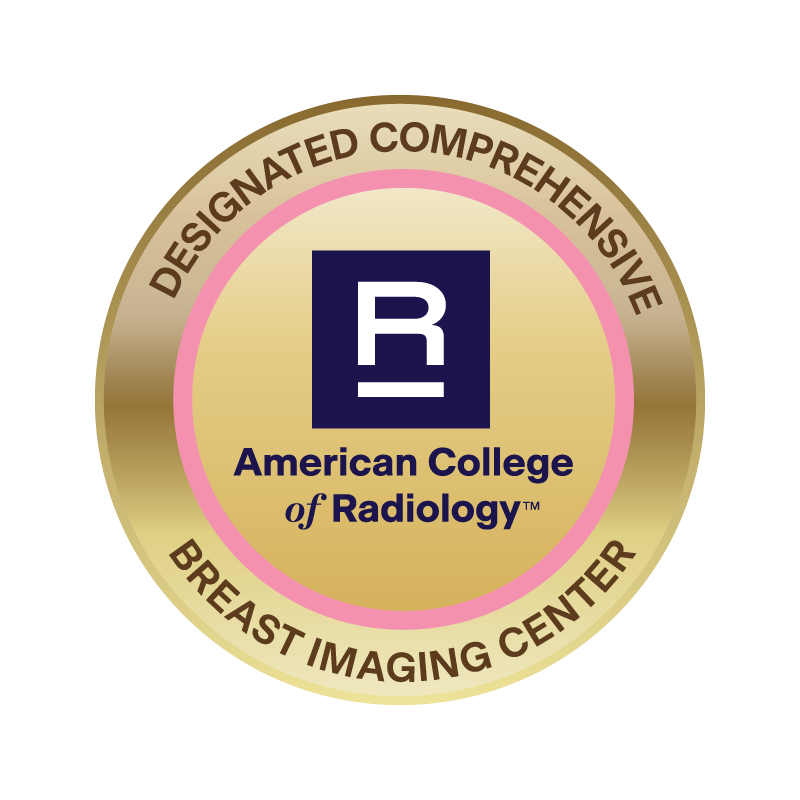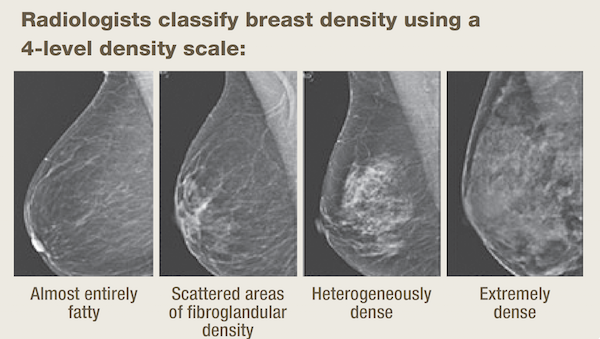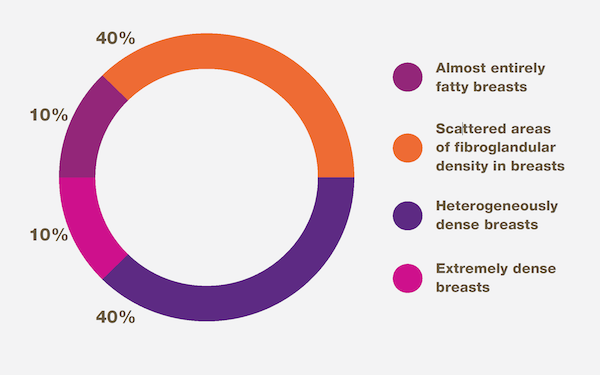- Digital Mammography
- 3D Mammography
- Breast Density
- Breast Ultrasound
- Breast MRI
- Breast Biopsy
- Ultrasound-Guided Breast Cyst Aspiration
- Bone Density (DXA)

Breast Density
Women's Services
Breast Density
What is breast density?
Breasts are made up of a mixture of fibrous and glandular tissue and fatty tissue. Your breasts are considered dense if you have a lot of fibrous or glandular tissue but not much fat. Density may decrease with age, but there is little, if any, change in most women.
How do I know if I have dense breasts?
Breast density is determined by the radiologist who reads your mammogram. There are four categories of mammographic density. The radiologist assigns each mammogram to one of the categories. Your doctor should be able to tell you whether you have dense breasts based on where you fall on the density scale. (See scale below)

Breast Density in the U.S. (See chart below)
- 10% of women have almost entirely fatty breasts
- 10% have extremely dense breasts
- 80% are classified into one of the two middle categories

Why is breast density important?
Having dense breast tissue may increase your risk of getting breast cancer. Dense breasts also make it more difficult for doctors to spot cancer on mammograms. Dense tissue appears white on a mammogram. Lumps, both benign and cancerous, also appear white. So, mammograms can be less accurate in women with dense breasts.
Are there any tests that are better than a mammogram for dense breasts?
In breasts that are dense, cancer can be hard to see on a mammogram. Studies have shown that ultrasound and magnetic resonance imaging (MRI) can help find breast cancers that can't be seen on a mammogram. However, both MRI and ultrasound, show more findings that are not cancer, which can result in added testing and unnecessary biopsies. Also, the cost of ultrasound and MRI may not be covered by insurance.
